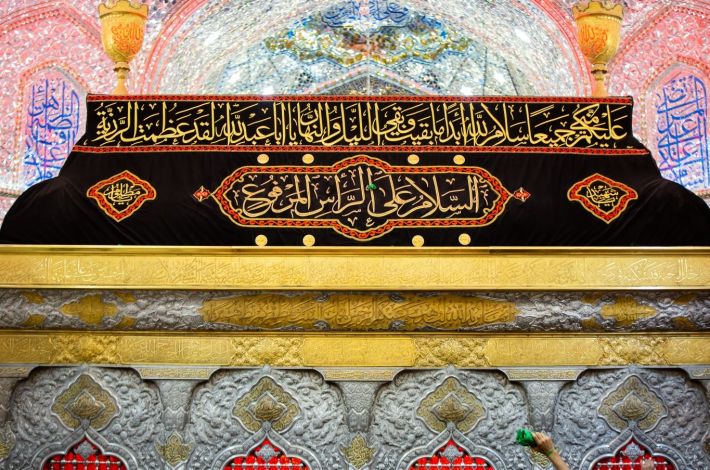The historians mention that many cities witnessed the passage of the procession of the captives of the Imam al-Hussayn's family (peace be upon him) and the holy heads, and in many places sanctuaries were built for the stations of the captivity journey to the Levant, and there is no doubt that the head of al-Hussayn (peace be upon him) was not buried there, but it was placed in it for a while, including Sanctuary of al-Mosul, a city in northern Iraq located on the shore of the Tigris River, about 600 km away from Kufa, and until the seventh century AH / thirteenth century AD there was a sanctuary there called “the sanctuary of the head of al-Hussayn,” as in (Isharat) by al-Harawi.
He said in (Nafs al-Mahmoum): As for the sanctuary of Mosul, “when the people wanted to enter Mosul, they sent to its governor to prepare food and forage and to decorate the town for them, so the people of Mosul agreed to prepare for them what they wanted but they should not to enter the town.
So they went to the outside of the town and placed the holy head on a rock, and a drop of blood drifted on it from the holy head, and it started to spring and blood boil from it every year on the day of Ashura, and people would gather there from the periphery and hold funerals and condolences' councils every Ashura, and this remained until Abdul Malik Ibn Marawan ordered the stone to be moved, and no trace of it was seen after that, but they built a sanctuary on its place that they called Mashhad al-Nuqtah.
And in (Al-Kamil) of the Baha'i: That the bearers of the holy head were afraid of the Arab tribes to come out on them and take the head from them, so they left the well-known path and took another one, and whenever they reached a tribe, they asked them for support and said that the holy head is of a kharijite.
And it was mentioned in another place - and that is in the conversation about the reason for building this sanctuary - that after the killing of Imam al-Hussayn (peace be upon him), they carried his head to the Levant, and passed him from Deir Saeed, and they stayed near it, and the head of Imam al-Hussayn (peace be upon him) was in a food-bag, and one of the monks of the monastery knew that, so he took it, washed it, perfumed it, and made it spend the night at his house, and a drop of blood dripped from the head on the ground; The monk built a sanctuary in the aforementioned place, and it was called Mashhad of the Hussayni Noqta, and it became a burial ground for the notables of Mosul.
